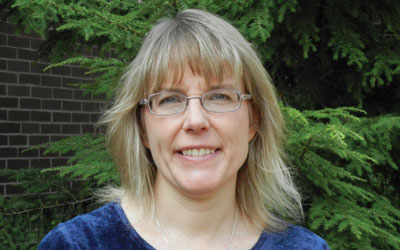In a nutshell with Katherine Stenerson, Sigma-Alrich
- Like
- Digg
- Del
- Tumblr
- VKontakte
- Buffer
- Love This
- Odnoklassniki
- Meneame
- Blogger
- Amazon
- Yahoo Mail
- Gmail
- AOL
- Newsvine
- HackerNews
- Evernote
- MySpace
- Mail.ru
- Viadeo
- Line
- Comments
- Yummly
- SMS
- Viber
- Telegram
- Subscribe
- Skype
- Facebook Messenger
- Kakao
- LiveJournal
- Yammer
- Edgar
- Fintel
- Mix
- Instapaper
- Copy Link
Posted: 30 June 2015 | New Food | No comments yet
Katherine Stenerson, Principal Applications Scientist at the Applied R&D Group, Sigma-Aldrich discusses the analysis of pesticides in fatty foods using zirconia-based sorbents for sample cleanup.


Increased regulations worldwide have resulted in an increase in the demand for pesticide residue testing. The required detection levels are often very low, which requires the use of highly sensitive gas chromatography (GC) and high performance liquid chromatography (HPLC) instrumentation. To maintain the performance of these instruments, some type of cleanup should be included as part of the sample preparation process. Over the past decade, QuEChERS, which stands for Quick, Easy, Cheap, Effective, Rugged, Safe, has become a popular method for the extraction and cleanup of fruit, vegetables and other agricultural products prior to pesticide residue analysis.
The extraction step uses acetonitrile and a salting out effect (with MgSO4). Cleanup is accomplished using dispersive solid phase extraction (dSPE) with a variety of sorbents. Many samples prepared by this method contain very little fat (<1%). However there are some commodities, such as olives, avocados and nuts, which contain a more significant amount. For samples such as these, a portion of the fat will be co-extracted with the pesticides. If the cleanup does not reduce this fatty background, it can affect the chromatographic analysis through injector and column fouling in the case of GC and GC-MS; and column fouling and ion suppression in the case of LC and LC-MS.
Common approaches to reducing background fat include the use of C18 and primary-secondary amine (PSA) sorbents in the cleanup step. However, this approach is often not sufficient for the cleanup of high fat samples. In addition, if the analytes of interest are hydrophobic, they can be retained by the C18 cleanup sorbent, resulting in reduced recoveries. As an alternative to these traditional cleanups, there is a new group of zirconia-based sorbents which have found utility in the cleanup of fats. These materials utilise the Lewis acid character of zirconia to interact with analytes that are electron donors (i.e. Lewis bases). In fats, these would include phospholipids, fatty acids, mono glycerides and diglycerides.
There are currently three types of these zirconia-based sorbents available. The first is a zirconia-coated silica (Z-Sep), the second is a blend of this zirconia-coated silica and C18-functionalised silica (Z-Sep/C18), and the third is a single material consisting of silica that is functionalised with both zirconia and C18 (Z-Sep+). In the zirconia sorbents that include C18, the zirconia and C18 chemistries work together to produce a synergistic effect in retaining a wider variety of fats. These sorbents can be applied to the cleanup of extracts prepared using QuEChERS, and this has been done for a variety of applications.
One of the first applications for which we used the zirconia sorbents was the analysis of pesticides in olives. Olives contain about 15% fat, which is enough to create a significant amount of background if no cleanup is used. Puréed canned olives were spiked at 50ng/g with pesticides. After a typical QuEChERS extraction, the extract was cleaned using C18/PSA and Z-Sep/C18 sorbent blends. The final extracts were then analysed by LC/MS/MS. Recoveries obtained after cleanup were better using Z-Sep/C18 than C18/PSA. This was due to lower back – ground in the Z-Sep/C18 cleaned extracts, resulting in better detection in the MS source. The presence of excessive background can disrupt analyte ionisation and detection in LC-MS, thus the Z-Sep/C18 removed more background, resulting in a better response.
In a second application, several different classes of pesticides were analysed in avocados by GC/MS. For extraction, a QuEChERS approach was used – with a modification to the sample to solvent ratio over the official published method. Avocados purchased locally were homogenised with the skin and spiked with pesticides at 20ng/g. After extraction, the acetonitrile extract was cleaned using the traditional C18/PSA mixture and the zirconia-based Z-Sep+ sorbent. The final extracts were analysed by GC/MS in selected ion mode.
Pesticide recoveries after C18/PSA cleanup were lower and more variable than those obtained after Z-Sep+ cleanup. The largest difference in recovery was seen with the more hydrophobic pesticides, illustrating that C18, while providing retention of fatty background, can also reduce recovery of hydrophobic analytes. It was also noted that the GC/MS runs of the C18/PSA cleaned extracts contained more background, which prevented detection of two of the target pesticides altogether.
With ever decreasing detection levels required for pesticide residue analysis, the need for rigorous sample cleanup is more important than ever. Now, there is a new approach to cleanup of fatty samples utilising zirconia-coated sorbents as part of the QuEChERS method. Zirconia-coated sorbents offer binding of some fats through Lewis acid-base interactions, and when combined with C18, can bind an even wider range of fatty compounds. They can be substituted for currently used cleanup sorbents such as C18/PSA without any special method modifications.
For additional information on the different zirconia-based sorbents used for the QuEChERS method, please visit: www.sigmaaldrich.com/zsep.



